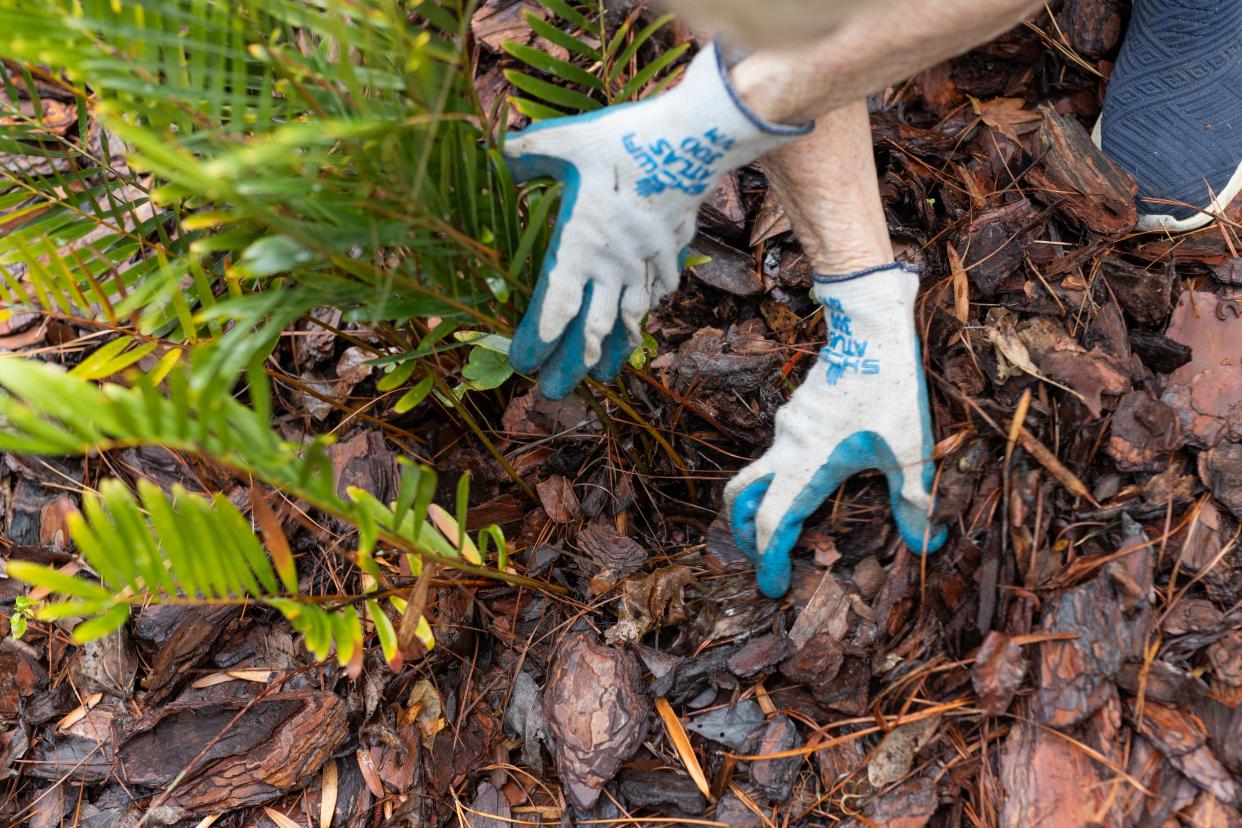Garden chores for April in Jacksonville: Spread mulch, plant shrubs and trees

Over the past weekend, my daughter made a comment about how green everything looked all of a sudden and I can definitely agree. I often like to think of Florida’s seasons as “green” for most of the year and then “less green” through the winter, and I believe we are now officially in the “green” season. Now is the time to really get outside in the garden before the heat of summer shows up in the not-so-distant future.
Spring is a great time to mulch
Who doesn’t love mulching? While the job of spreading mulch can be tedious and time-consuming, it really does have its benefits such as improving soil water retention, preventing some weed growth, and adding organic matter into the soil over time. It also defines your landscape beds and contrasts well with your plants. In Florida, apply mulch in a layer of 2-3” in your beds but keep it away from curbs and shorelines because it can erode away or break down, releasing nutrients into the environment. When spreading mulch, you should also keep it away from the base of any plant and about 12-18” away from tree trunks. Never build up a pile of mulch directly against a plant.
When choosing a mulch, pick an organic product such as pine bark, pine straw, or chipped invasive species like melaleuca or eucalyptus. Do not use cypress, rubber mulch, or gravel as a mulch in Florida. In fact, termites have been shown to survive better under gravel than bark and wood mulches. However, if you are worried about termites, make sure not to spread it too thickly to allow soil to dry.
Spring-flowering shrubs and trees
This is the time of year when we get the most questions about identifying flowering shrubs and trees. Many clients just want to know what the beautiful plant they see as they drive to work is so that they can add it to their landscape and honestly, spring is a great time to plant trees and shrubs and get them established through the summer. If you are looking for spring-blooming trees for our area consider fringetree (Chionanthus virginicus) or Eastern Redbud (Cercis canadensis). If you are looking for a larger tree, it is hard to go wrong with a southern magnolia (Magnolia grandiflora). Make sure to give them room to grow to mature size and expect to provide additional water as needed for the first six months after planting. For shrubs, azaleas are moving past their glory but plant them for next year and consider the native species like Pinxter and Florida Flame. Other shrubs you may see blooming this month that work well in our area are roses, bottlebrush, gardenia, glossy abelia and yesterday-today-and-tomorrow.
More of a good thing
As new growth starts in your garden, take this opportunity to propagate by dividing or taking cuttings of your favorite plants. If you have bulbs, grasses, or large clubs of some perennials, dig them up and divide them to create more to spread them further in your garden or share with friends. You can also take cuttings of the tender new growth on your perennials to get more of your favorite flowers. This is a cost-effective and fun way to increase your gardening skills and it always makes sense to grow more of what works well in your yard.
Things to plant in April
Vegetables: Beans, cantaloupes, carrots, celery, collards, corn, cucumbers, eggplants, green onions, Kohlrabi, lettuce, mustard, okra, parsley, peppers, potatoes, pumpkins, radish, southern peas, squash (summer and winter), Swiss chard, tomatoes, and watermelon.
Annuals (Transplants only, not seed): Ageratum, Alyssum, Amaranthus, Asters, Baby’s Breath, Balsam, Begonia, Browalia, Calendula, Celosia, Calliopsis, Cosmos, Dusty Miller, Exacum, Gaillardia, Gazania, Geranium, Exacum, Gaillardia, Gazania, Geranium, Hollyhock, Inpatients, Lobelia, Marguerite Daisy, Marigold, Nicotiana, Ornamental pepper, Pentas, Phlox, Rudbeckia, Salvia, Strawflower, Sweet Williams, Thunbergia, Torenia, Verbena, Periwinkle, and Zinnia
Bulbs, tubers or rhizomes: Blood lily, Caladium, Canna, Crinum lily, Amazon lily, Allium, Alstroemeria, Aztec lily, Begonia, Dahlia, Gladiolus, Kaffir lily, Lily, Tiger lily, Tritonia, Tuberose, Voodoo lily, and Zephyr lily.
Wayne Hobbs is an extension agent in environmental horticulture for Clay County.
This article originally appeared on Florida Times-Union: What you should be doing in your garden in March in Florida

